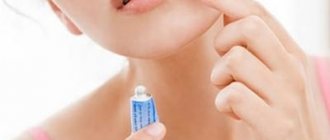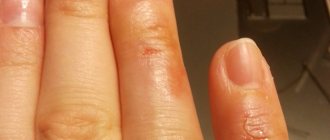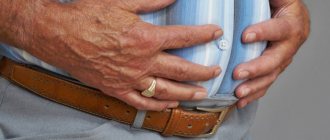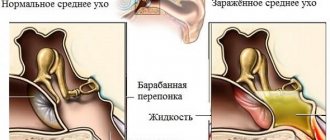Seriously ill people who are forced to lie down for a long time often suffer from bedsores. Bedsores are damage to skin tissue in places where the human body is constantly in contact with the bed. Why is this happening? The blood vessels that are located on human skin are very elastic. And if you squeeze them for a long time, without changing their position, a sufficient amount of blood does not get into them. As a result, they starve and gradually die off. The skin loses sensitivity and bedsores form. The patient's condition is aggravated by the fact that bedsores can not only hurt, but also itch. There are several stages in the development of this disease.
- The first stage is the beginning of the development of bedsores. At this stage, the skin changes color - it may become red or bluish, and swelling appears. In some places, the integrity of the skin may begin to deteriorate. If you press on the places of bedsores, the blood flows away from the place of pressure, and then does not return to its previous state or this happens for a very long time. Healthy blood circulation in the affected areas is disrupted.
- At the second stage of development of bedsores, sores, blisters, abrasions, ulcers, and open wounds appear. Bedsores may ooze blood or ichor.
- The third stage is very dangerous, because at this stage the tissues completely die off - they are no longer able to recover. At the third stage, the ulcers become very deep and the wounds do not heal. Sometimes not only skin tissue, but also muscle tissue is destroyed. Bedsores may turn black and dark blue.
- The fourth and final stage is characterized by severe destruction of skin, muscle and bone tissue.
how to relieve stress and tension
Caring for a bedridden patient
To get rid of bedsores and prevent their reappearance, you need to properly care for a bedridden patient. 90% of success in the fight against bedsores depends on this. After all, bedsores are sometimes called the disease of unkempt patients. So, to maintain patient hygiene, the following rules must be followed.
- To avoid bedsores, you need to change the patient's position several times a day if this does not cause discomfort for him. Place the patient on his stomach, then on each side. Let him lie in this position for several minutes. Change the patient's position at least every couple of hours.
- From time to time, rub the places that are most susceptible to the appearance of bedsores - the back of the head, elbows, tailbone, buttocks, back, heels. This will improve blood circulation in the designated areas.
- If the patient's condition allows, regularly imitate the movement - lift his arms and legs, doing light gymnastics.
- Change bedding as often as possible - at least once every 5 days. If there are open sores on the body, underwear should be changed daily to prevent the wound from becoming infected. Every day you need to shake the sheet so that there are no crumbs or other small debris on it. When you make your bed, there should be no folds, bumps or buttons on it. Hard and rough seams on bed linen are also not allowed.
- Prevention of bedsores is taking daily air baths. Expose those areas where bedsores may appear and leave them open for half an hour. And if you expose them to the sun's rays, it will be even better. After all, ultraviolet light improves blood circulation.
- If bedsores already exist, they cannot be massaged. It is better to knead the skin around the lesion to prevent bedsores from spreading.
- Today, there are special anti-decubitus mattresses on sale that take the anatomical shape of a person and do not put pressure on the skin.
- If a seriously ill person cannot move and cannot be turned over, an inflatable rubber ring needs to be placed under his buttocks from time to time. It should lie in such a way that the tailbone and butt are in the hole of the circle. To prevent the skin from burning from the rubber structure of the circle, you just need to place it in a pillowcase or first cover it with a cotton cloth.
- Quartzizing the affected areas of skin tissue with a special lamp helps very well. We wrote about how to use a quartz lamp correctly in this article.
- Hygiene of the whole body is very important. Wipe the patient's skin daily with soapy water and rinse thoroughly with clean water. After this, you need to wipe the patient with an alcohol-containing composition. Pay attention to all folds - under the arms, in the groin area, under the knees, in the neck, and in women - under the breasts. Careful and regular treatment will help prevent diaper rash.
- If bedsores become red and inflamed, if there is pain and detachable pieces of skin tissue, if you feel an unpleasant odor, most likely the wound has become infected. In this case, you need to treat the ulcers with antiseptic drugs and take antibiotics.
- Do not smear bedsores with thick, heavy ointments or bandage them with thick cloth. This blocks the flow of air to the wound and leads to the progression of the disease.
- The patient's skin should not be wet. It does not need to be rubbed vigorously; movements with the sponge should be soft and careful. The water should not be wiped off, but blotted. In addition, make sure that the patient’s skin is not dry. Soften it in time with baby cream.
- If your skin is prone to moisture, use baby powder or talcum powder.
- The risk of developing bedsores increases if the patient has diabetes or obesity. By the way, men develop bedsores much more often.
- The situation becomes aggravated if the patient has fecal or urinary incontinence. In this case, you need to change the adult diaper often, and regular perineal toileting is required.
Which parts of the body are most often affected?
The location of skin necrosis directly depends on the position the patient takes.
Most often, bedsores appear in the following areas of the body:
- Back of the head, shoulder blades, sacrum and heels. In this case, the patient lies on his back.
- The area where the limbs bend, as the skin in these areas is thin.
- Ankles when the patient is on his side.
How to help in this case and prevent the development of deep damage? First of all, you should determine the cause of the pathological process, pay attention to provoking factors, and, of course, select special anti-bedsore products (ointments, creams, gels, dressings) that help care for the skin of a sick person.
Drug treatment of bedsores
Modern treatment for pressure ulcers involves stopping the progression of the disease and healing existing wounds. For bedsores, first of all, you need to wipe the affected areas with antiseptic solutions. This could be hydrogen peroxide or alcohol. Camphor alcohol helps very well. It disinfects the surface and improves blood circulation.
Dead tissue cannot be restored, so you need to get rid of it in a less painful way. In advanced cases, they resort to surgery; for small affected areas, Iruksol ointment is used. It promotes the rejection of necrotic tissue and wound healing.
Along with this, the patient is prescribed drugs that improve local blood flow, for example, Actovegin. The patient is also prescribed anti-inflammatory drugs that will help prevent the development of microorganisms in the wound. Solcoseryl gel helps heal open ulcers. Xeroform powder is also very effective against bedsores. Physiological methods are also used for treatment - electrophoresis and Darsonval perfectly improve blood circulation.
You can also use special fabric bandages. They are impregnated with an antibacterial composition and allow air to pass through to the wound.
Advantages of the Comfil Plus dressing with an overhead circle
The Comfil Plus dressing is an improved model. The advantage of the product lies in the presence of special backing rings. They are located on the outer and inner sides of the product and are removed one at a time, starting from the center of the bandage.
To select the desired size, special elastic “ears” are provided, allowing for reliable fixation of the bandage in the heel area. The product ensures rapid wound healing, accelerates the process of tissue regeneration, and prevents secondary infection from penetrating the bedsore. One dressing is enough for 2-6 days. Infrequent shifts are beneficial for speedy wound healing and also provide patient comfort.
The main advantages of the bandage:
- the product is soft and elastic;
- can relieve pain;
- nerve endings and inflamed tissue are reliably protected by absorbent gel;
- the bandage does not cause injury, does not cause pain when changing, does not cause allergies;
- reliable fixation of the product is ensured by the adhesive edge without the presence of additional dressings.
Before applying the bandage, it is recommended to disinfect the surface of the heel. For this purpose, a product such as Furacilin or Rivanol can be used. The skin around the wound dries out. The size of the bandage should be 2 cm larger than the size of the wound. The bandage is applied to the inflamed skin and fixed to healthy skin using “ears”. The rings are removed until the product stops loading the heel. As the pus and exudate are absorbed, the bandage changes color. It becomes transparent. In this case, it needs to be changed.
Anti-bedsore agents (bandages) are not used for deep bedsores with wounds and wound pockets. Also not used for infected necrosis.
Folk remedies against bedsores
I would like to note that treatment of bedsores at home is acceptable at the first stage and as a preventive measure. Advanced cases are best treated under medical supervision.
- Calendula is an effective and safe antibacterial agent. Two tablespoons of a dry or green plant should be poured with a liter of boiling water. Leave the broth to steep for several hours. Strain and use when washing ulcers.
- You can also treat bedsores with alcohol tinctures. Pour a tablespoon of birch buds with a glass of alcohol or vodka and let it brew for several days in a cool, dark place. Then strain and dilute half and half with water. Wipe the areas affected by bedsores twice a day.
- If you wipe the patient with mouthwash every day during hygiene procedures, you can protect the person from the appearance of diaper rash and bedsores on the body.
- Rosehip oil – disinfects the surface, improves bleeding, softens the skin.
- Wheat poultice is good for bedsores. Pour a glass of wheat into a liter of boiling water, cover the pan with a towel and leave the millet to swell. When the cereal softens and absorbs water, the mixture must be strained. Place the pulp in a linen bag and place it under the bedsores. You need to keep it for about 20 minutes until the mass cools down.
- Black elderberry leaves have a pronounced antibacterial effect. Dried leaves should be evaporated in milk and applied to the affected areas of the skin.
- Recipe for folk ointment for bedsores. Place a few pieces of butter in the pan. Fry a finely chopped onion in oil. Melt a candle in a separate bowl. Mix onion, oil and wax. This ointment should be applied to bedsores several times a day. Store the prepared product in the refrigerator.
- In villages, a special mattress stuffed with straw helped against bedsores. It took the shape of the human body, did not press and was not rigid. In addition, straw perfectly allows oxygen to pass through. It is best to use oat straw.
- Mix vodka and shampoo in equal proportions and wipe the bedsores with it. This is a very good and effective remedy.
- Lungwort leaves are an excellent preventative against bedsores. Apply the freshly squeezed juice of these leaves to your skin several times a day.
- Several Kalanchoe leaves need to be cut lengthwise to maximize the cut surface area. Apply the cut section of the sheet to the bedsore and leave overnight. The plant disinfects and heals wounds well.
- Raw potatoes should be grated and mixed in equal quantities with fresh natural honey. Apply this mixture to the wound for several hours. Honey is a natural antiseptic, and potatoes, thanks to their starch, dry wounds well.
If bedsores are not treated promptly, they can lead to serious complications.
In advanced cases, bedsores can destroy bones. In addition, due to an open, non-healing wound, the risk of blood poisoning increases. And sepsis can be fatal. Permanent damage to the epidermis increases the risk of blood cancer. That is why bedsores need to be treated in time, and even better, prevention. A person who cannot move, who is tied to a hospital bed, may develop bedsores within a couple of weeks. Therefore, it is very important to monitor his hygiene, carefully care for the patient’s skin and toilet. In addition to hygiene, you need to maintain a drinking regime so that the skin is sufficiently elastic. Care and perseverance in care, compliance with all the rules and instructions of the doctor can save a person from bedsores and get him back on his feet.
how to lower blood pressure with folk remedies
Contraindications and side effects
The main contraindication is intolerance to any component included in the product.
The following side effects are also possible:
- burning sensation;
- allergic reaction;
- redness and itching of the skin;
- swelling, irritation.
Before using each ointment, be sure to read the instructions for it.
As noted earlier, medications from different pharmacological groups are used to treat bedsores in bedridden patients. The choice of a particular drug depends on many factors. Next, we will describe the most effective drugs from different groups, which are most often used for the treatment of bedsores.











